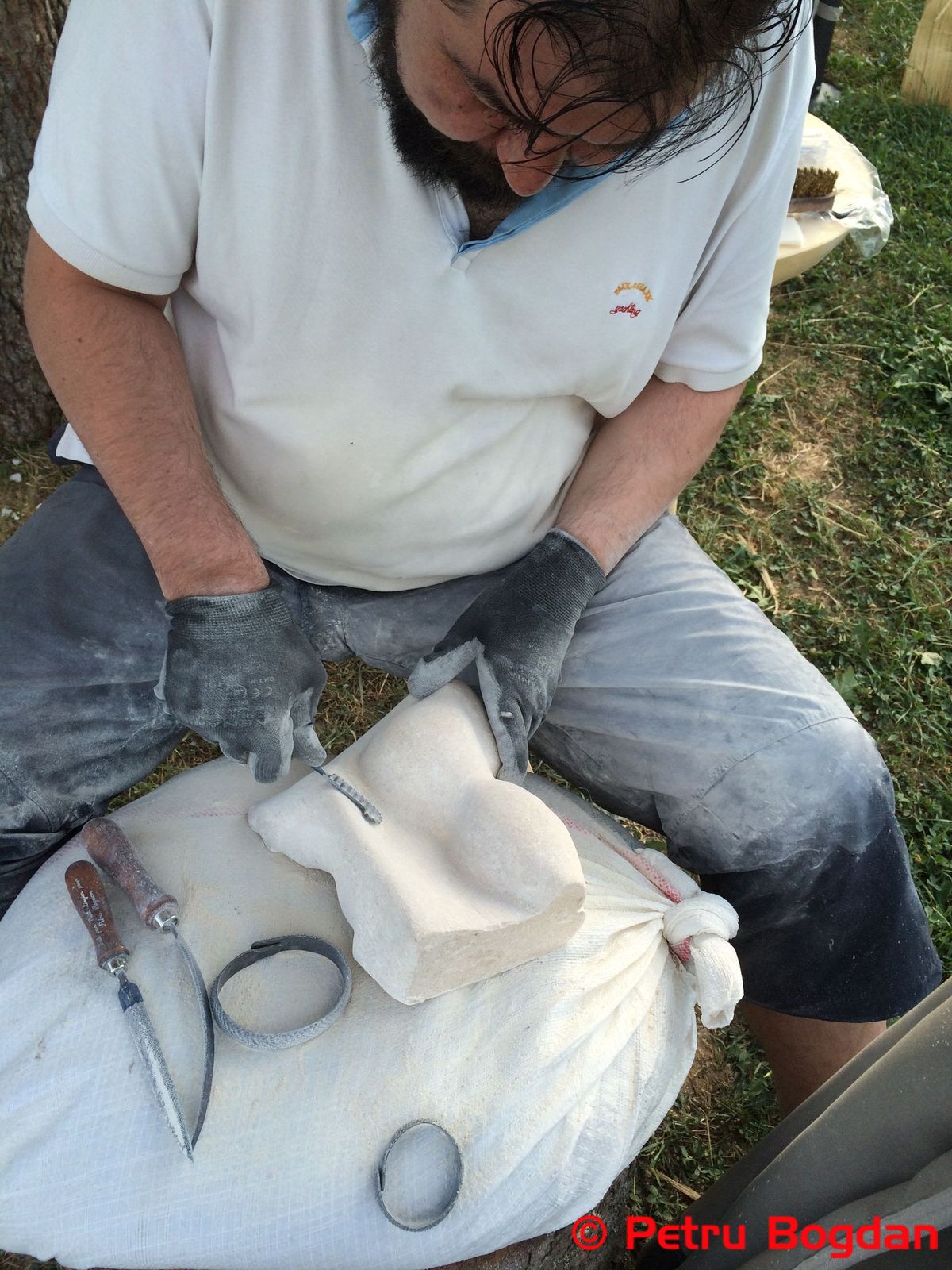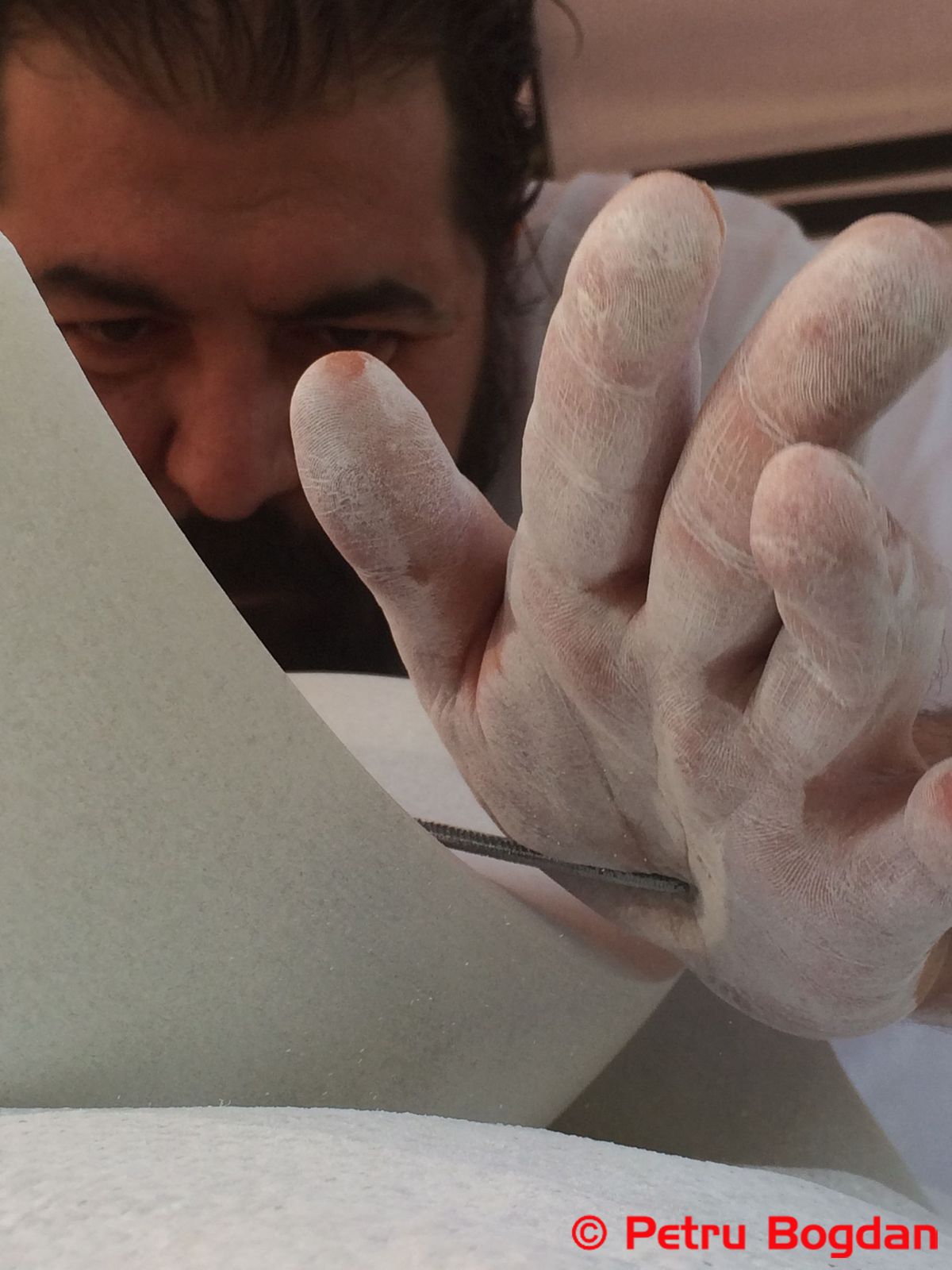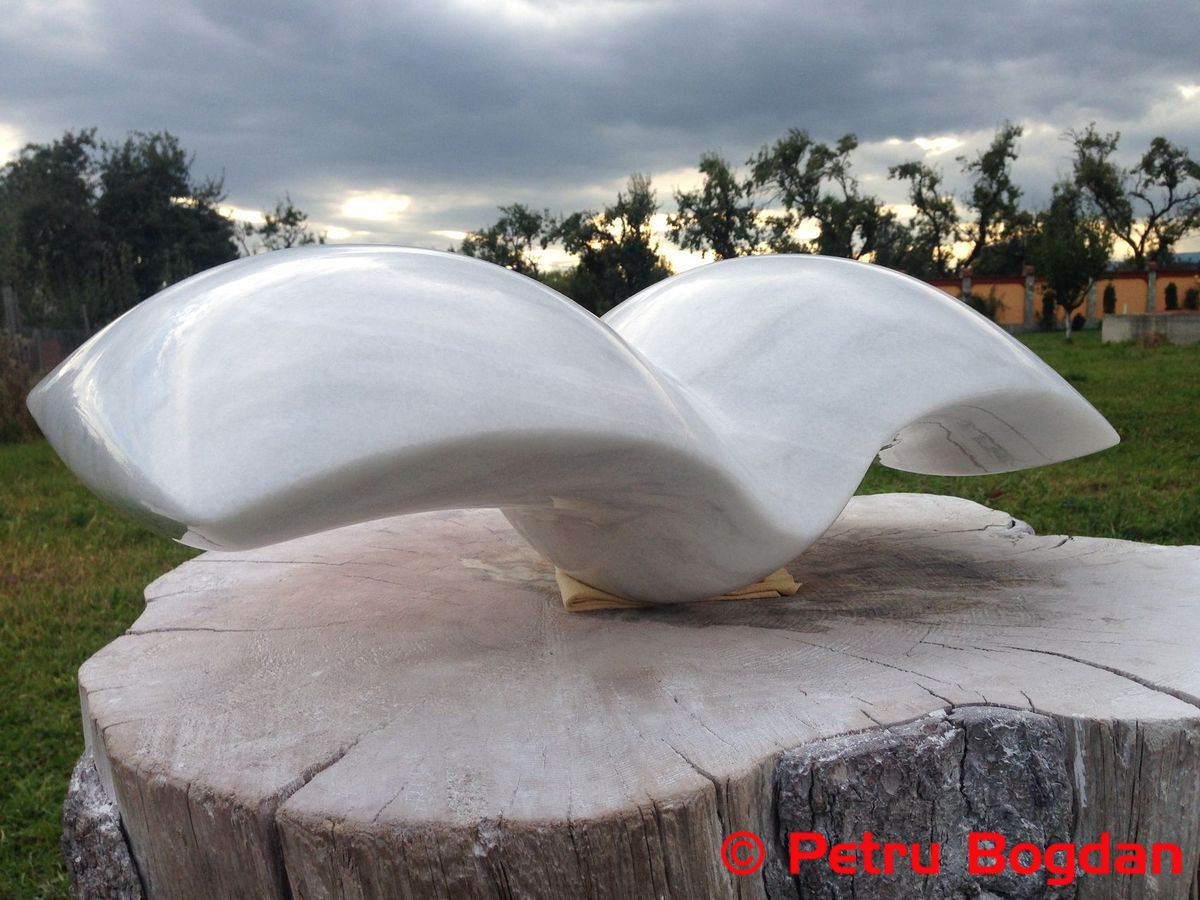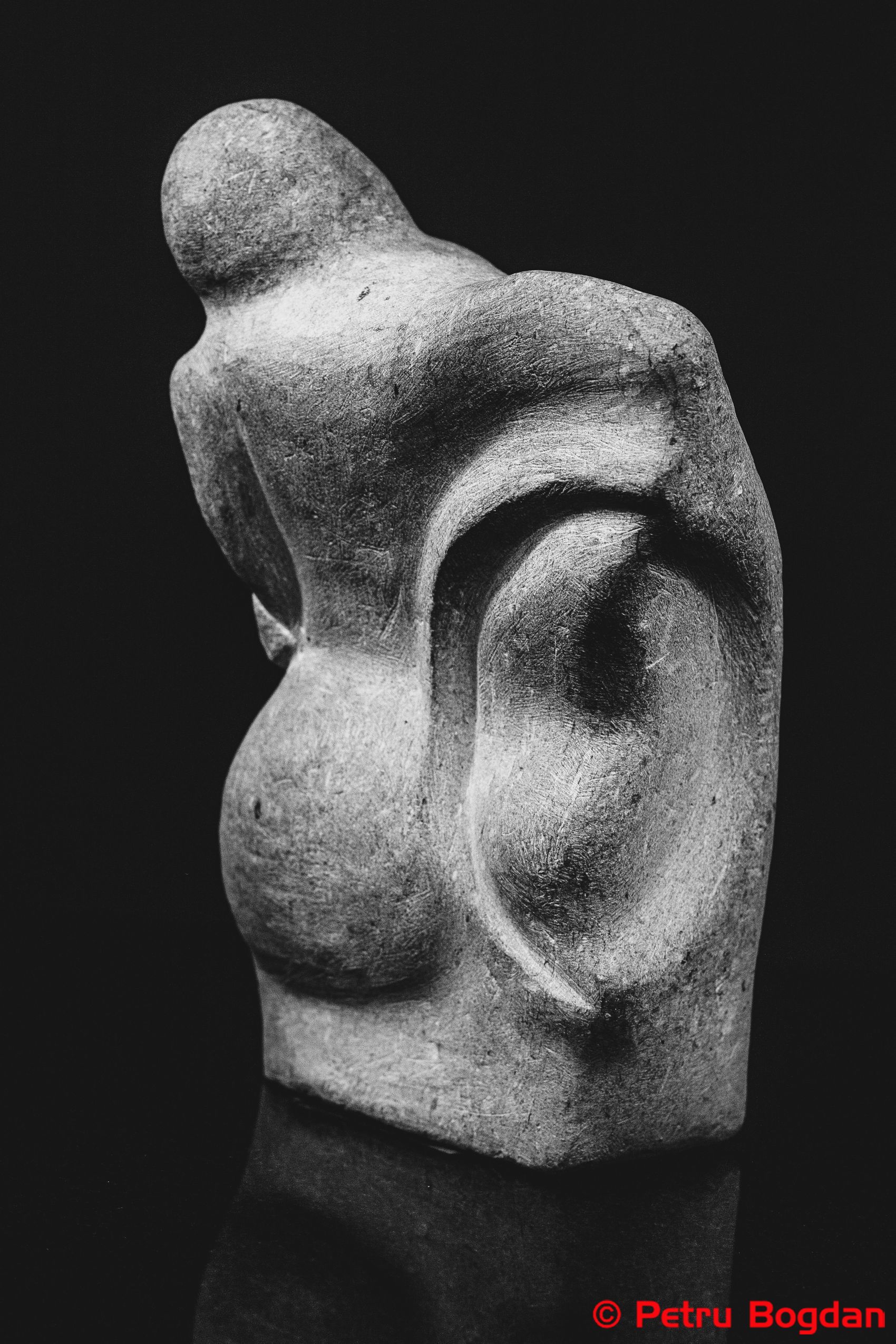Petru Bogdan, From 2D to 3D, From Photography to Sculpture
In 2012-2013, almost by chance, Petru Bogdan discovered the sculpture. As was the case with photography 15 years ago, a new artistic expression path has opened, a new window of communication with the Universe harmony.
Artist Adolph “Ad” Reinhardt (American, 1913–1967) once commented, “Sculpture is something you bump into when you back up to look at a painting.”
Because sculpture frequently occupies space in much the same way as humans occupy space, we can identify with sculpture in a different way than with an image, painting or photography. An image traditionally represents an illusion of a three-dimensional space on a flat surface while sculpture actually inhabits the space shared by the viewer. Sculpture is also tactile – one could actually touch it and feel its various textures and forms and finally, looking at sculpture is a dynamic act of observation: the artwork changes as the viewer moves through space and time.
In an interview about the definition of sculpture as an art form and what sculpture represents form him, Petru Bogdan said:
“Sculpture is shaping The Matter itself. Maybe, every block of stone has a statue inside it and it is the task of the sculptor to discover it, as Michelangelo said. Or maybe, what is real is not the external form, but the essence of things… (Brancusi) and the sculptor’s task is to “charge every particle of matter with life”(Giacometti). I choose to believe that sculpture is a symbolic language to express my own ideas, feelings and vision of life. Or maybe, I just choose a block of marble and chop off whatever I don’t need as Rodin thought.”
Conceptual Art
His works, both recent sculptures and previous photographic works, define him as an artist in the “conceptual art area”.
Marcel Duchamp is often known to be the forefather of Conceptual Art. He is best known for his ready-made works, like Fountain, the famous urinal that he designated as art in 1917 and that is seen as the first conceptual artwork in art history.
The definition of conceptual is something having to do with the mind, or with mental concepts or philosophical or imaginary ideas.
Conceptual art is the art for which the idea (or concept) behind the work is more important than the finished art object. … When an artist uses a conceptual form of art, it means that all of the planning and decisions are made beforehand and the execution is a perfunctory affair. Art as Idea, art of the mind rather than the senses.
Why “area of conceptual art” with quotation marks?
It is true that before starting to work, Petru Bogdan always formulates a conceptual model, an abstract philosophy, meant to explain the world that cannot be proven or seen.
But, he is equally concerned with the way in which his art stimulates the senses and produces emotion, a deep, intimate and unique emotion that in turn creates the potential of an absolute intense communication between the object of art and the viewer, and mediates the artist’s message sending. A continuous communication, from his point of view, a communication open to new interpretations every time the viewer interacts with the object of art.
Hence the concern for details that are never accidental in his works as well as placing in context both the subject of the artwork and the manner of the artwork’s presentation. All are not accidental and are part of the artistic message.
Abstract Art
As for his sculptures as a form of artistic expression, they fall into non-figurative, abstract art.
Abstract art is any art in which the depiction of real objects in nature has been subordinated or entirely discarded, and whose aesthetic content is expressed in a formal pattern or structure of shapes, lines and colors.
Sometimes, the subject is real but so stylized, blurred, repeated or broken down into basic forms as to be unrecognizable. Sculpture that is partly broken down in this way is called semi-abstract. When the representation of real objects is completely absent, as opposed to realistic or figurative sculpture, such art may also be called nonrepresentational or nonobjective, a term first used by Wassily Kandinsky (1866-1944).
An abstract element or intention appears in works of art and decoration throughout the history of art, from Neolithic stone carvings onward. But abstraction as an aesthetic principle began in the early 20th century with Braque (1882-1963).
Petru Bogdan`s sculpting technique is a non-rigid, fluent, biomorphic one; it is a technique of symmetrical curves reunited in a continuous line that sublimates into the light.
Biomorphic Art
The category of biomorphic art is large and diverse. In a 1936 catalogue for the Museum of Modern Art, museum director Alfred H. Barr coined the term biomorphism to describe the trend of “curvilinear,” “decorative,” and “romantic” forms in abstract art. These artworks drew upon the organic shapes of plants and animals, rejecting the rigid structures of geometric abstraction in favor of something much more free-flowing.
Icons of biomorphism include the sinuous Art Nouveau structures of Antoni Gaudí and Hector Guimard, the surrealist dreamscapes of Joan Miró and Yves Tanguy, the rounded sculptures of Henry Moore and the sweeping architectural forms of Zaha Hadid and Frank Gehry.
Irreversible
Petru Bogdan’s first stone artwork entitled “Irreversible” is a biomorphic one and beyond the essence of the artist’s message, which remains for the viewer to discover and resonate with, it seems to be inspired by the curved lines of Moore’s sculptures and his way to depict the human body.
Henry Moore is best known for his semi-abstract monumental bronze sculptures which are located around the world as public works of art. His forms are usually abstractions of the human figure, typically depicting mother-and-child or reclining figures.
Moore’s works are usually suggestive for the female body, apart from a phase in the 1950s when he sculpted family groups. His forms are generally pierced or contain hollow spaces.
It is also worth mentioning that Petru Bogdan`s “Irreversible” is an unfinished piece, but the author has no intention to finish it because for him it represents a beginning of a road, a road with an unsuspected path and unknown destinations. He sees this road as continuous and … unfinished.




